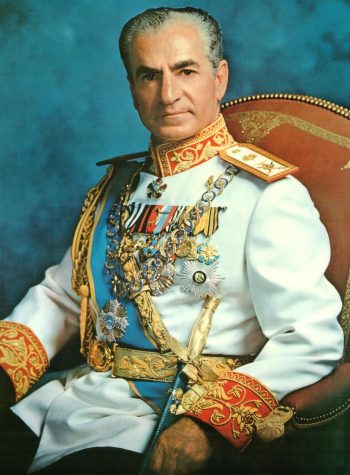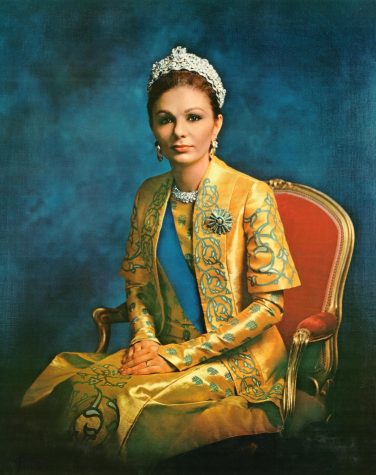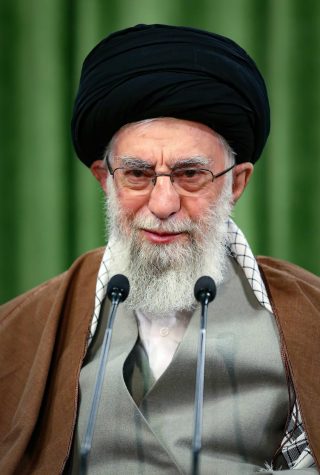History of Women’s Rights in Iran
In recent months the media has had a fixed target in Iran.
February 2, 2023
The death of Masha Amini, a 22-year-old woman who was arrested by Iran’s morality police. The morality police a force unit that ensures the hijab is worn “properly” and women dress accordingly to the established dress code in Tehran for not wearing a hijab “correctly,” has triggered a wave of protests for freedom in Iran. In order to understand the crisis Iran is going through, we need to go back in time.
1926: Coup d’état.
In 1926, a coup d’état, a sudden violent seizure of power from a government, took place. The leader of the coup, Reza Khan was crowned and his son Mohammed Reza Pahlavi was proclaimed prince. Later, he would become the last Shah (Iranian monarch).

1936: End of hijab.
Women’s clothing had already been an issue on the agenda of the country’s leadership at the beginning of the 20th century. The hijab was officially abolished in 1936, during the era of Reza Shah Pahlavi. The monarch had already encouraged women to stop wearing the hijab or “make it shorter.” It was a huge political advancement for women in the country, although many felt that this monarchy infringed on their right to decide what to wear and their freedoms.
1941: Heir to the throne and The White Revolution (1963-1979).
In 1941, the son of the proclaimed monarch Reza Shah Pahlavi, Mohammed Reza, assumed power. In 1963, the “White Revolution” began to modernize the country. During this period, measures were taken such as giving the right to vote to women, which was granted in 1963 at the beginning of the revolution. In addition, access to education was improved and the law for the protection of the family was approved, which among other aspects, legalized the right to divorce. With the family protection law, it was also established that men could only have one wife. Although women were now able to take part in social and political life, similar to men, it was still a very difficult path and not everyone in Iran perceived these changes and legislation in a positive way, many women chose to continue to occupy traditional gender roles. This type of legislation expanded women’s rights

Farah Pahlavi:
Farah Pahlavi, the wife of Mohamed Reza, played a key role in promoting art and culture in the country. During the 1950s, 1960s, and early 1970s Iran experienced an artistic flowering that made international headlines. The great cultural and artistic flourishing during this period was also accoladed by economic stability since Iran gained large amounts of oil. Although the situation of the country and women had improved, many artists continued to claim the lack of some freedoms, and artists like Nahid Hagigat expressed the lack of rights and freedoms for women.
1971: Authoritarian regime.
In 1971 Mohammad Reza declared himself “Shahanshah” and “the King of Kings,” and his government became a totalitarian regime. Reza increased the repression of political dissidents and curtailed the freedoms of the press and speech. All political parties and organizations were strictly controlled by the king and anyone expressing opposition to him or his laws was imprisoned.
1978: Protests.
Dissatisfaction with the government grew and protests intensified, women took part in the protests demanding more rights and democracy for all the people in Iran. Many grew angry with the inhuman conditions the government imposed on the nation.
1979: Fall of the Shah.
After the protests and demonstrations demanding true democracy, the regime fell. Although the people who participated had different visions and plans for the future of Iran, women expected more rights and freedoms. After the fall of the regime, a constitution was drafted and approved, establishing that the highest political and religious authority is the supreme leader. The Ayatollah, controls the parliament, the presidency, the judiciary, the Revolutionary Guard, the regular army, the intelligence services, the police agencies, the clerical elite, the Friday prayer directors, and a large part of the media.
Modern Iran:
For 33 years, the top position has been held by Ayatollah Ali Khamenei.

Shortly after the triumph of the revolution, reactionary forces and anyone who stood with or in favor of the revolution were persecuted and forced into silence. Iran has experienced several protests since the establishment of the new regime over various economic, social, and political issues.
On September 16, 2022, a wave of protests began due to the death of Masha Amini, a 22-year-old woman arrested for not wearing the hijab “properly.” She was taken by Iran’s morality police and sent to a “re-education” center. After three days she died and the protest began.
She died three days later in a hospital. Her death has triggered a wave of protests in Iran’s major cities, including the capital, Tehran. It is estimated that now approximately 90,000 people gathered, 1,160 injured and 531 dead. Currently, the rally continues, they began to claim the death of young Masha Amini and the freedom of women but not only that, they are also claiming freedom and fundamental rights.

